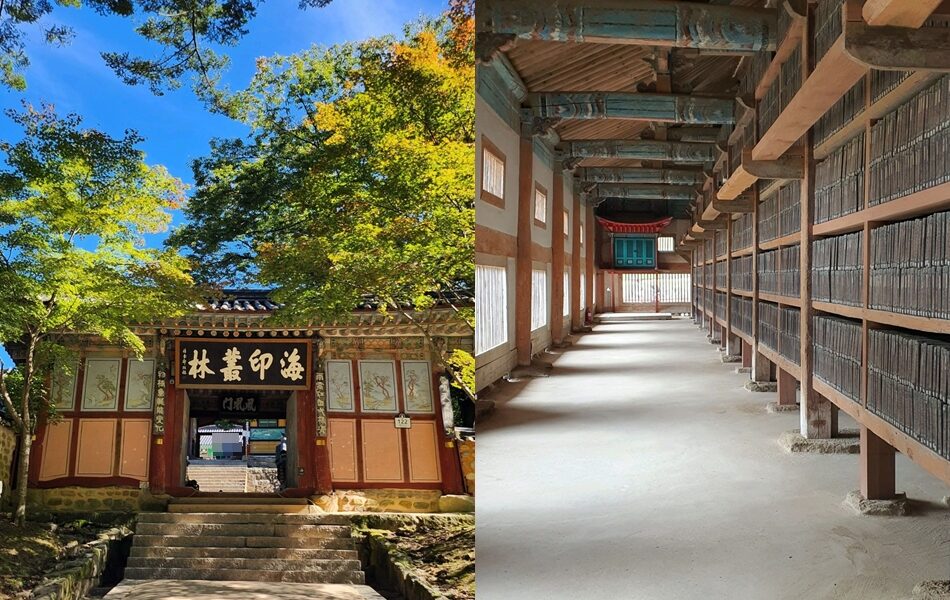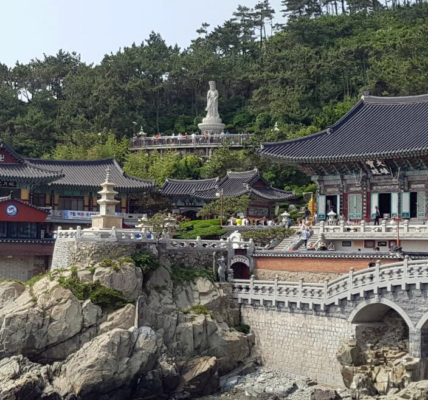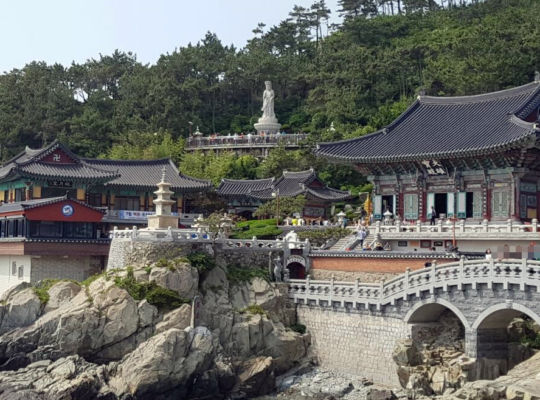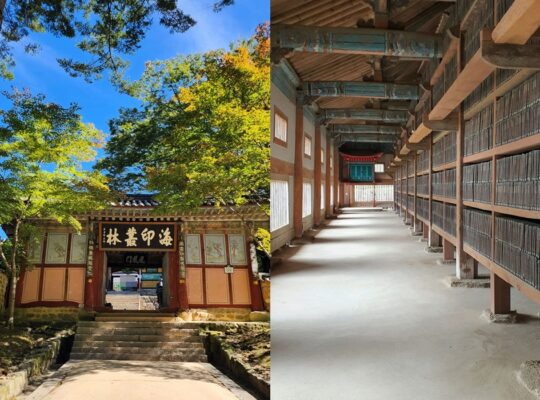Introduction
Nestled within the lush Gaya Mountain (Gayasan) in South Gyeongsang Province, Haeinsa Temple(해인사) is a must-visit destination for any traveler seeking both cultural and spiritual immersion. As one of Korea’s Three Jewel Temples, alongside Tongdosa and Songgwangsa, Haeinsa is renowned for its ancient heritage and the preservation of the Tripitaka Koreana, a collection of over 80,000 woodblocks containing Buddhist scriptures.
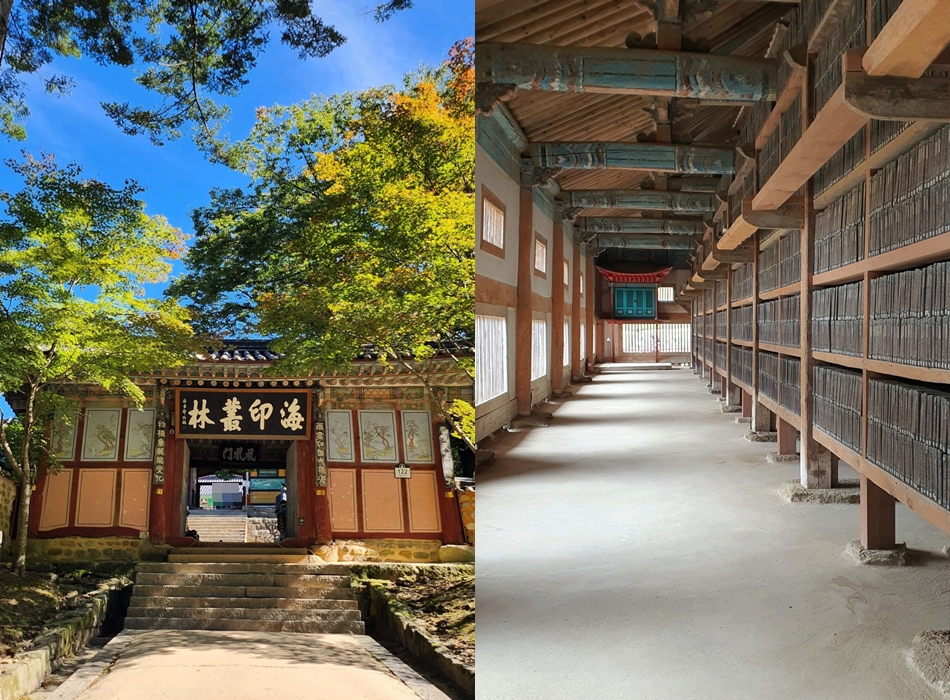
A Brief History of Haeinsa Temple
Haeinsa was founded in 802 AD during the reign of King Aejang of the Silla Dynasty by two monks, Suneung and Ijeong. The temple’s name, “Haein,” is derived from the Buddhist concept of Haeinsammae, symbolizing the enlightened state of Buddha’s mind as reflected in the calm sea. Over the centuries, Haeinsa has been a center for Buddhist teachings and has gained fame as a “Dharma Jewel Temple”, due to its association with sacred Buddhist texts.
In the 10th century, Haeinsa was designated a national temple by King Taejo of the Goryeo Dynasty, after a monk from the temple, Heerang, helped him in a strategic battle against the Later Baekje kingdom.
The Tripitaka Koreana and the Dharma Jewel Temple
Perhaps Haeinsa’s greatest claim to fame is its role as the guardian of the Tripitaka Koreana. These wooden blocks, carved during the Goryeo Dynasty, are considered one of the most complete and accurate collections of Buddhist scriptures in the world. Amazingly, they have survived wars, invasions, and fires, largely due to the ingenious design of the Janggyeong Panjeon, the storage halls built to preserve the woodblocks.
The preservation techniques used at Haeinsa are awe-inspiring. The building’s ventilation, natural temperature control, and specific architecture have kept the woodblocks in pristine condition for centuries.
Architectural Wonders at Haeinsa
Beyond the Janggyeong Panjeon, Haeinsa boasts an array of beautifully crafted halls and shrines. Visitors can explore the Daejeokgwangjeon Hall, the temple’s main hall, which enshrines a large Buddha statue. The Haetalmun Gate (Gate of Liberation) symbolizes the spiritual liberation that visitors may seek, while the Iljumun Gate, which means “one-pillar gate,” marks the threshold between the secular world and the sacred temple grounds.
Among Haeinsa’s affiliated hermitages, Hongjeam and Baekryeonam offer peaceful retreats for those looking to meditate in a serene natural setting.
How to Get to Haeinsa
Reaching Haeinsa is relatively simple from major cities like Daegu or Busan. Visitors can take a bus from Daegu Seobu Bus Terminal directly to the temple. The journey is scenic, winding through the picturesque Gaya Mountains, offering visitors a glimpse of Korea’s rural beauty.
For those who enjoy hiking, the surrounding Gayasan National Park offers several trails that provide breathtaking views of both the temple and the natural landscape. The park is particularly popular during autumn, when the mountains are ablaze with vibrant fall foliage.
Why Visit Haeinsa?
Haeinsa is not just a religious site but a cultural and historical treasure that tells the story of Korea’s dedication to preserving Buddhist teachings. Its peaceful atmosphere, combined with the stunning natural beauty of the Gaya Mountains, offers a meditative retreat from the hustle and bustle of urban life.
As a UNESCO World Heritage site, Haeinsa is a beacon of Korea’s rich cultural heritage. Whether you’re interested in history, architecture, or spirituality, a visit to Haeinsa is an enriching experience that offers a deeper understanding of Korean Buddhism and its influence over the centuries.
Final Thoughts
For travelers looking to explore Korea’s spiritual and historical roots, Haeinsa Temple is a journey worth taking. Its rich heritage, stunning architecture, and tranquil setting provide a unique glimpse into Korea’s Buddhist history. Be sure to include this destination in your itinerary for a well-rounded cultural experience in South Korea.

